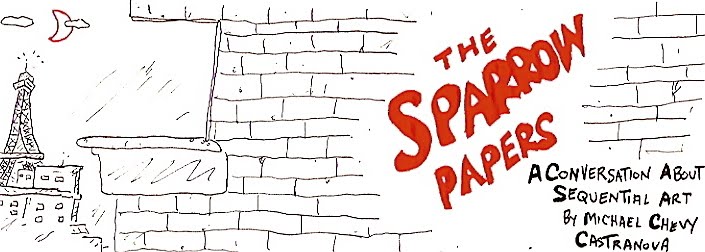 Jessica Abel, who teaches comics at New York’s School of Visual Arts, believes comics shouldn’t be considered a visual art. It’s narrative art, she contends, and should be thought of — and taught — in the same category as film studies.
Jessica Abel, who teaches comics at New York’s School of Visual Arts, believes comics shouldn’t be considered a visual art. It’s narrative art, she contends, and should be thought of — and taught — in the same category as film studies.That whole idea of narrative was the key to her presentation Wednesday evening at the Kalamazoo (Michigan) Public Library, during which she critiqued, sometimes harshly, her own early work.
“When I started, I didn’t know what I was doing,” she told the audience (many of whom gripped sketch pads during the presentation). Her big problem was not the drawing, but that she didn’t know how to tell a story. The question of “What happens next” stumped her, she claimed.
It was while she was doing mini-comic Artbabe that a fellow cartoonist suggested to her that Archie comics, of all things, contained perfectly distilled stories. So Abel, a former writing major, began the first of several analyses of good story-telling. With Archie, it’s this basic: 1 Archie wants Veronica. 2 He meets an obstacle. 3 He finds a solution. 4 There are consequences. 5. There’s the concluding situation.
Abel’s quest for the perfect narrative evolved, through what she deemed the Three-Act Story Structure (set-up, conflict, resolution), to a more complex Narrative Arc, which she worked out while she wrote and drew La Perdida — a spark sets the protagonist’s life out of balance; the protagonist tries to settle the problem or question; moving on to a climax, in which that problem or question is definitely answered … or not answered.
Sometimes that “answer” is an internal epiphany, for the character or for the reader, Abel said.
She and her husband, Matt Madden, are working on a new version of their very helpful Drawing Words & Writing Pictures. (It helped me — I’d never heard of an Ames Lettering Guide before.)
See my review of La Perdida posted Sept. 06, 2009.

No comments:
Post a Comment